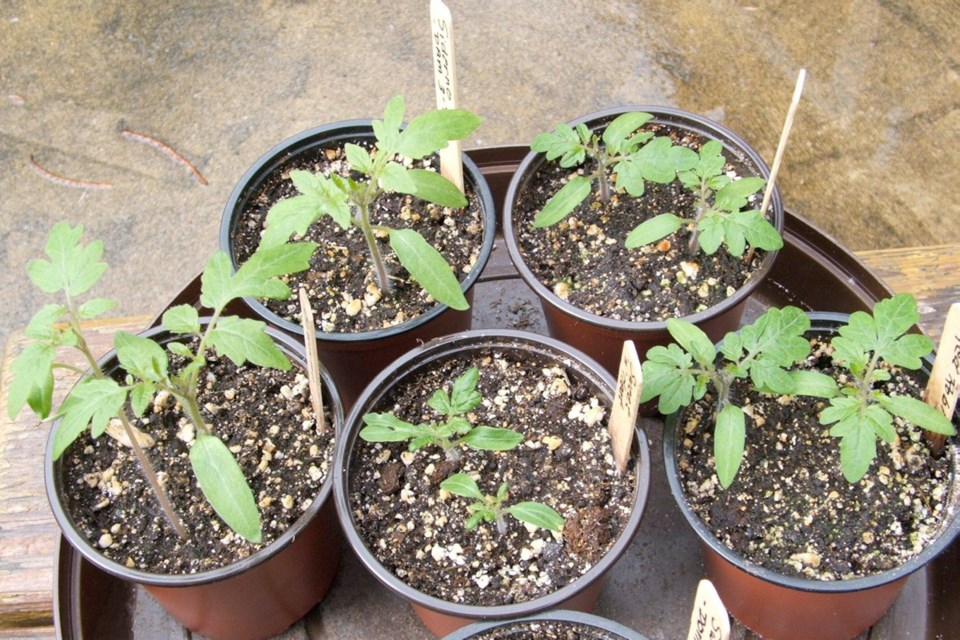Dear Helen: When is the best time to lift, divide and transplant a clump of rhubarb?
V.L.
March and October are the two preferred times for dividing and transplanting rhubarb. Once a clump is lifted, use a sharp knife to divide it into pieces for replanting. Choose for planting the outermost, youngest parts of the clump and make sure that each one you select has at least one fat, pink bud.
Because rhubarb is a fairly long-lived perennial plant, lasting between five and 10 years before needing to be divided, it’s important to prepare a site that will support the plant adequately with a fertile, humus-rich soil. Plump the site well with a nourishing compost and firm the rhubarb division well into the soil with its top (crown) just beneath the soil surface.
It’s best not to pull stalks for eating from plants in their first year. Harvest only modestly in the second year. Always leave a reasonable number of stalks on a harvested plant. I aim at taking no more than a third of the stalks at a time.
Gather stalks by grasping them down low, close to the plant crown, and pull while twisting the stalk to one side. That will result in a clean separation of the stalk from the crown.
To keep a rhubarb plant in good productive condition, stop or severely curtail harvesting at the end of June or early in July. At that time, mulch generously around the plant with compost or/and well composted manure, and keep the plant well watered through the summer.
Dear Helen: When do you start tomato seeds indoors?
A.R.
I sow seeds of open garden tomatoes around now, late March to early April, using 10-cm-wide pots set on a plant tray. As the seedlings develop and fill the small pots with roots, I move them into deeper containers such as tall paper cups or milk cartons with holes punched in the bottom for drainage. This gives me transplants with the most extensive root systems possible. I seed small-size tomatoes to grow in pots on the patio earlier, in late February to early March.
Dear Helen: What creature(s) might be responsible for the removal of flower buds on my tulip magnolia? I find the remains of unopened and partly opened buds, with chewed marks on them, on the ground beneath the tree.
P.B.
The most likely culprits are squirrels, quail or some other birds. A possible deterrent is to arrange lightweight netting or row-cover material over the tree, gathering the material together and securing it at the bottom to prevent trapping birds.
Some people hang pie tins, wind chimes or old CDs in trees under attack.
Another option is to spray a cayenne-pepper solution around the buds. This has to be done carefully, however, Do not apply the mixture on any low areas that are accessible to children, pets and other benign creatures.
Dear Helen: My over-wintered carrots started sprouting recently. Are they still all right to eat?
W.E.
Yes, but harvest them as soon as possible. Snap off green sprouts, rub away fine root hairs and refrigerate them. Left in the garden, the carrots won’t last much longer in good edible condition.
When I see the first signs of green growth at the tops of over-wintered carrots, usually in early to mid March, I shovel soil over them, to help keep the roots cool and slow the sprouting. If leaves I’ve used to cover the soil for the winter are nearby, I’ll rake them over the carrots too, as added insulation. Whenever you do this, take care to mark the area housing the remaining carrots with stakes, to indicate where to dig the next roots.
Dear Helen: Where can I buy Sweet Success cucumber seeds? I’ve been looking but have not been able to find them.
D.K.
Two sources that I have are Lindenberg Seeds in Manitoba and William Dam Seeds in Ontario. Transplants are available at some garden centres. Establish a source by phoning a few of your local outlets, to see which ones have ordered transplants in for later in the spring.



